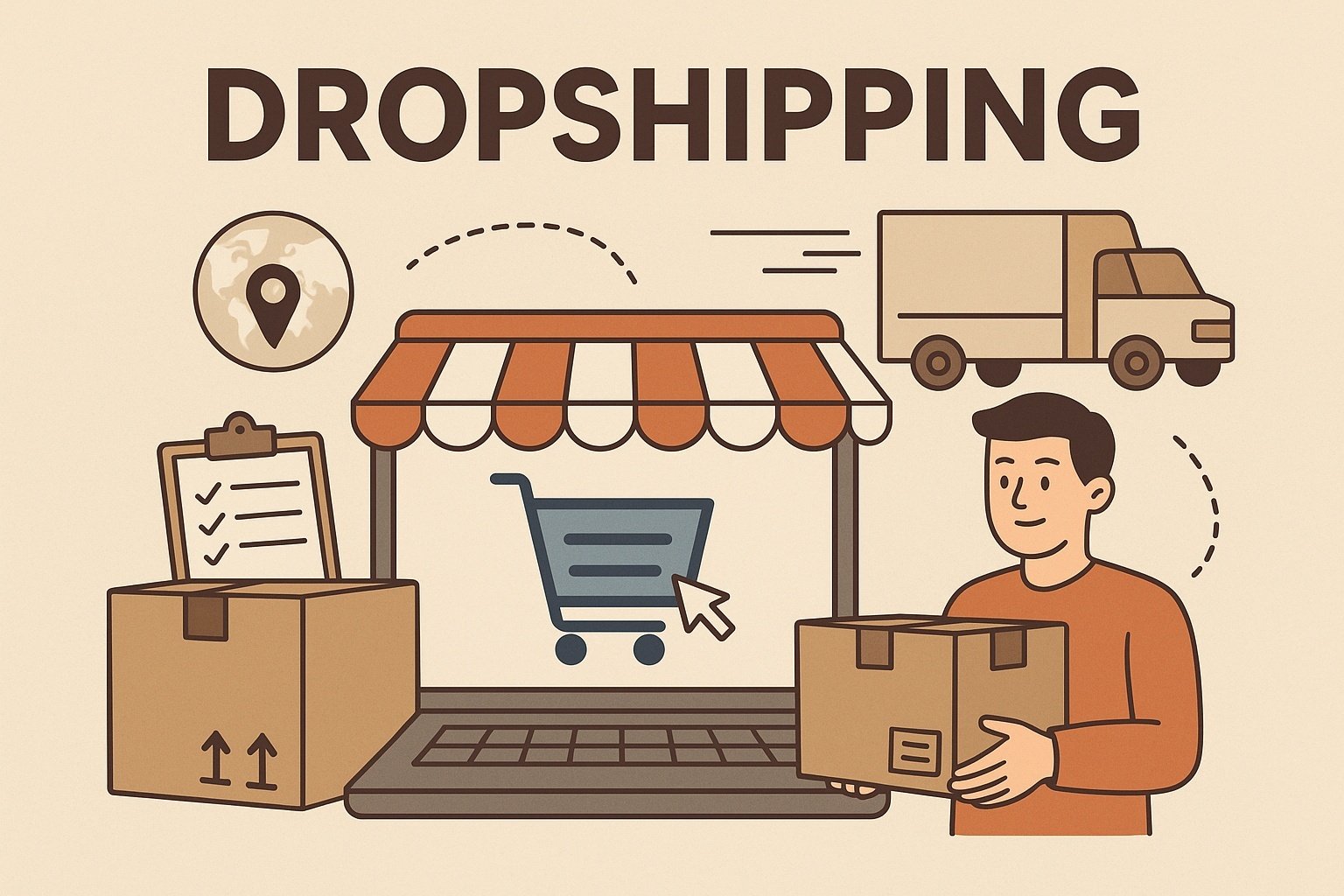In the modern era of e-commerce, many people are exploring ways to start an online business without huge investments. One model that has gained massive popularity over the last decade is dropshipping. It is often described as one of the easiest ways to enter the world of online retailing, yet many newcomers find it confusing at first. To put it simply, dropshipping allows you to sell products to customers without keeping any inventory. You act as a middleman between the supplier and the buyer, which makes it a low-risk and cost-effective business model. Let’s understand what dropshipping is, how it works, and whether it could be the right path for you.
What is Dropshipping?
Dropshipping is an e-commerce fulfillment method where the store owner does not keep the products in stock. Instead, when a customer places an order, the store forwards the details to a third-party supplier who directly ships the product to the customer. As a result, the seller never handles the physical goods, which reduces overhead costs and eliminates the need for storage space.
For example, imagine you are running an online store that sells trendy mobile accessories. Instead of buying stock in bulk and storing it in a warehouse, you list items from a supplier on your website. When a customer orders a phone case, you purchase it from the supplier at a lower cost, and the supplier ships it straight to the customer. Your profit comes from the difference between your selling price and the supplier’s price.
How Does Dropshipping Work?
The process of dropshipping might sound simple, but it involves a series of steps that must run smoothly for success. It begins when a customer browses your online store and places an order. Once the payment is received, you send the order details to your supplier, who then packages and ships the product. During this process, the customer usually remains unaware that a third-party supplier is involved, as the order is branded under your store’s name.
Technology plays a vital role in dropshipping. Platforms like Shopify, WooCommerce, and BigCommerce allow entrepreneurs to set up online stores easily, while apps such as Oberlo or Spocket help connect store owners with suppliers around the world.
How to Start a Dropshipping Business
If you are considering starting your own dropshipping business, the first step is choosing a niche. Instead of selling everything, focus on a particular category where you can target a specific audience. Popular niches include fashion accessories, home décor, fitness equipment, and pet supplies.
Once you decide on your niche, set up your online store using an e-commerce platform. Design your store to look professional and user-friendly because first impressions matter a lot in online shopping. After setting up your store, connect it with trusted suppliers who provide quality products, reasonable prices, and reliable shipping services.
Marketing is the heart of dropshipping. Since you are competing with thousands of other online sellers, your ability to attract customers determines your success. Social media platforms, search engine optimization (SEO), influencer collaborations, and paid ads are effective ways to drive traffic to your store. Building a brand identity rather than just selling generic products is key to long-term growth.
Advantages of Dropshipping
One of the biggest attractions of dropshipping is the low investment requirement. Since you do not need to purchase inventory upfront, your financial risks are much lower compared to traditional retail businesses. This makes it ideal for students, part-time entrepreneurs, or anyone looking to start a side business without quitting their full-time job. Dropshipping also offers flexibility and scalability. You can operate your store from anywhere as long as you have internet access. Whether you are traveling, working from home, or managing other commitments, dropshipping provides the freedom to run your business remotely. Moreover, since suppliers handle shipping, you can focus on marketing, customer service, and expanding your product range without worrying about logistics.
Another benefit is the wide variety of products you can offer. Unlike traditional retailers who are limited by storage space, dropshippers can sell thousands of products in different categories without ever touching them. This variety attracts a broader customer base and increases the chances of making consistent sales.
Challenges and Risks of Dropshipping
While dropshipping has its advantages, it is not without challenges. The low entry barrier means that competition can be fierce. Many sellers may list the same products from the same suppliers, which makes it difficult to stand out and often forces businesses to compete on price. Profit margins in dropshipping are generally lower compared to other business models. Since you are not buying in bulk, you cannot take advantage of wholesale discounts, and therefore, your markup on each product may be small. To make significant profits, you must rely on high sales volumes or clever marketing strategies.
Another issue is dependency on suppliers. If your supplier runs out of stock, delivers poor-quality items, or ships orders late, your business reputation will suffer even though the problem was not directly your fault. This makes choosing reliable suppliers one of the most critical decisions in dropshipping. Customer service can also become challenging. Since you are not in control of inventory or shipping, handling returns, exchanges, or complaints requires good communication with your suppliers. If not managed properly, these issues can lead to negative reviews and loss of customer trust.
Is Dropshipping Worth It?
Dropshipping is not a get-rich-quick scheme, as many people mistakenly believe. While it does provide a simple way to enter e-commerce, building a successful dropshipping store requires time, effort, and smart strategies. If you are willing to put in consistent work in marketing, customer service, and supplier management, dropshipping can be a profitable venture. However, those looking for instant success without effort may find it disappointing.
In today’s fast-paced digital marketplace, dropshipping has opened doors for thousands of entrepreneurs worldwide. Its low investment requirement, flexibility, and wide product choices make it appealing to beginners, but its challenges require careful planning and commitment. By choosing the right niche, working with trustworthy suppliers, and focusing on customer satisfaction, dropshipping can be transformed from a simple side hustle into a sustainable online business.

